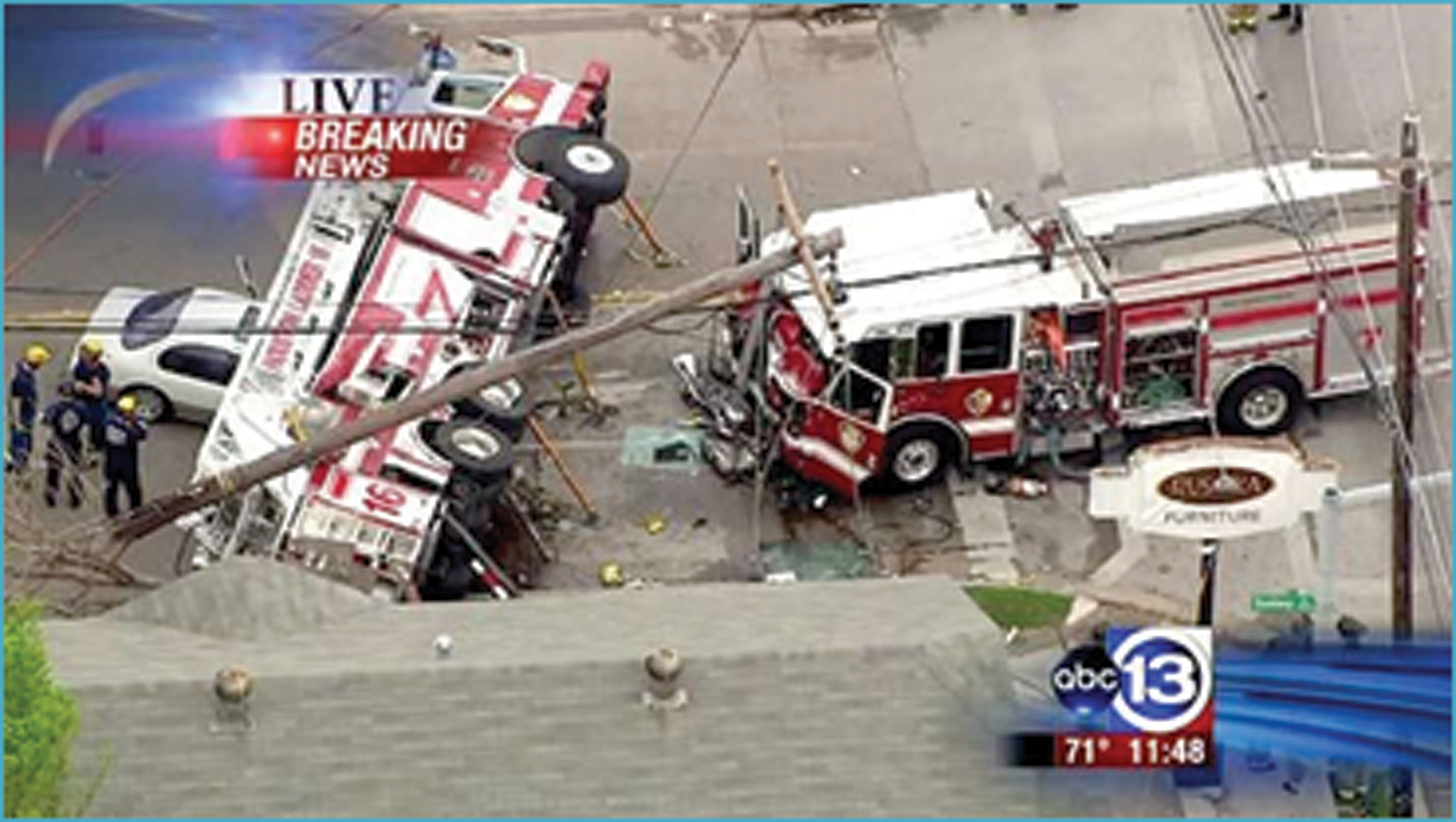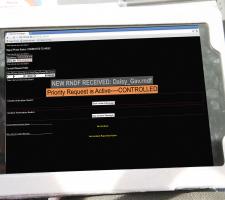
The initial primary concern of Maricopa County’s Smart Drive test programme is development of automatic signal control to prevent collisions between emergency vehicles
Field trials under way in Arizona promise eradication of accidents between emergency vehicles at intersections – as part of a national focus on ‘intelligent signal’ infrastructure
Collisions between police cars, ambulances and fire crews as they reach intersections at the same time, with equal priority given by all signals set on red, are as serious as they sound absurd. For emergency teams and those in need of their help, the consequences are dire. The solution could come from application of connected vehicle technology, as recognised by a team involved in an extensive research project launched in January this year.Engineers of Maricopa County’s Department of Transportation (MCDOT) in Arizona and researchers of the state’s university have started a series of trials at MCDOT’s ‘Smart Drive Test Bed’ in Anthem, AZ. Communication links are being tested between Maricopa County traffic incident response vehicles, MCDOT’s traffic management centre (TMC) in southern Phoenix and six interconnected sets of traffic lights along the test bed on Daisy Mountain Drive in Anthem.
Plans for further phases of tests anticipate Daisy Mountain Fire District trucks and local school buses simulating emergency response scenarios in real traffic conditions. Ultimately, as the connected vehicles approach intersections they will communicate with roadside technology to trigger appropriate traffic signal priority in accord with sets of predetermined protocols. Emergency crews will be fed information on the position, direction of travel and hierarchy of all response vehicles approaching the intersection; and the south Phoenix TMC will be able to track all that is happening as the system is activated.
A lot of data has to be gathered, appropriate timings determined and software fine tuned before this final testing can be carried out, however, in collaboration with a number of other project partners. The University of Arizona has been developing software and communications technology through its Smart Drive programme for the past five years – a fact picked up by the federal Government and others.
Maricopa’s Smart Drive Test Bed has been selected with one other, the Caltrans test site in California, to act as a field trial location for the national Cooperative Transportation System Pooled Fund Study (CTSPFS). This has been established by the
Virginia University – the principal technical support partner of CTSPFS – was due to select a preferred supplier at the end of January this year for developing a concept of operations and system requirements for the multi modal signal system. The Maricopa County and Caltrans sites are expected to be feeding data to support this ITS infrastructure planning over the coming year, before providing full blown testing for CTSPFS as the systems develop.
“Initially our work looked only at priority signalling for emergency vehicles, but we later realised the same could be applied for transit operations. Then, in more recent times, as our studies were already well under way, they have been incorporated into the national CTSPFS programme, which will be using results from our work,” says MCDOT ITS manager Faisal Saleem.
For now the primary concern of the Maricopa County study remains emergency vehicle signal priority: “we are building intelligence on conflicting vehicle approaches,” Saleem says.
Systems and software developed so far have already been tested in lab conditions, with computer modelling and a mock up intersection built to test GPS tracking and both vehicle to infrastructure and vehicle to vehicle communications. Essentially the technology concept projects vehicles’ on-board units communicating with roadside equipment via DSRC (dedicated short range communication), with Wifi and
“All software of the system will be in the roadside Smart Drive units, of which there will be one at each intersection connected to traffic signal controllers. As vehicles approach, they will establish communications with the unit. This will calculate signal settings appropriate to relative positions and speeds and feed information back to the on-board units so all can see where other vehicles are approaching from,” Saleem says.
“Part of the challenge is figuring out how far back to map intersections from stop bars; we need to map stop bars on a GIS map in a standard way and we have to provide latitudinal and longitudinal information to roadside units with great reliability. We can do 20 communications per vehicle per second, but need a very low latency. The transmissions have to be immediate.”
Considerable work has already been done at the University of Arizona with a lot of data gathered. The communications technology was tested first, to establish how far back from intersections a good connection between vehicle and intersection could be made. “We determined a reliable range of 1km; a distance that an emergency vehicle travelling at speed will cover in less than a minute, so rapid communication of priority is critical,” says Saleem. “The second step involved modelling different scenarios and priorities. We learned a lot about the challenges involved in linking the software to settings in signal controllers and how to develop appropriate timing plans that work.”
Applying this to real life scenarios presents new challenges, however. Initial testing on the Smart Drive Test Bed is evaluating GPS tracking of vehicle positions and speeds – information that will be communicated to the Phoenix TMC – and determining at what point messages should be first sent to vehicles. Saleem says: “All of this has to be set out for each intersection. There are a lot of variables and we have to address each several times over. It’s an iterative process needed to optimise all the different sequences and timings.”
There are also considerations of intersection layout and topography: “The system will be fine tuned for each individually,” Saleem says. Furthermore, decisions on relative priorities of different emergency services have to be made: “The logic of priority will be programmed into the roadside units, predetermined through institutional arrangements and agreements.”
It is likely that different sequencing scenarios will be set dependent on the type of situation, Saleem says. For instance, in the event of a road traffic accident, it may be that the ordering of priority will be ambulance then fire service then police. Or the closest fire truck will get a green light in the event of a fire. “These protocols will be established in consultation with the various stakeholders and activated by TMC operators from information gained from the services,” Saleem adds.
Setting of the priority scenario from the TMC is expected to be the first stage of system activation. The automatic element will take over as vehicles close in on each intersection and they are picked up by the roadside units. Depending on direction, location and speed, the software will then calculate the signal timing needed, firstly to get everyone through the intersection safely and secondly in the right order.
It remains to be seen whether this will work effectively with the many variables involved. It can also be imagined that with signals behaving in unusual ways (with emergency vehicles given a green light in one direction instead of all lights being set to red) behaviour of other road users may interfere with the system.
“Passenger vehicles are expected to perform as they are currently required to do by law in Arizona, yielding right of way to all emergency vehicles in response operations,” says Saleem. “All red indication may potentially impede the flow of the emergency vehicle and increase response time, while a green indication will help better flush the passenger vehicles through the intersection. Also, in future, widespread adoption of connected systems may allow communication of positions and priorities of emergency services to all vehicles nearby, facilitating safe and organised flow of traffic.
Study partners tasked with multi modal project
The Cooperative Transportation System Pooled Fund Study (CTSPFS) has been established by the Federal Highway Administration with the transportation departments of California, Florida, Michigan, Minnesota, New York, Texas, Wisconsin, Washington and Virginia – the lead agency – and Maricopa County. The study will ‘support the development and deployment of cooperative transportation systems’ following a strategic plan of AASHTO, which declared a need for a concerted national effort on cooperative vehicle infrastructure.
In parallel, the
The multi modal intelligent signal system has five areas for development expanded from the DMA programme:
1. Intelligent traffic signal system – overarching technology for all applications, additionally using V2V and V2I communications to alter signal timings dynamically for maximising traffic flows.
2. Transit signal priority – allowing better management of bus services by setting signal priority based on various factors.
3. Mobile accessible pedestrian signal system – aiding visually impaired pedestrians via signal information relayed to personal communication devices.
4. Emergency vehicle preemption – replacing ‘all red’ pre-emption with dynamic setting of priority using V2V and V2I communication.
5. Freight signal priority – aiding vehicle movements and safety where traffic is concentrated around freight facilities.











